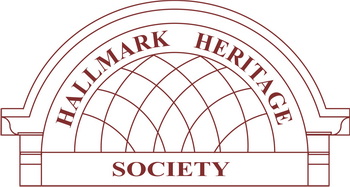Daily Colonist, December 12, 1948.
OLDEST SCHOOL IN WEST STANDS AT CITY’S EDGE.
By HB Steven.
Approaching Craigflower Bridge from Victoria a traveler may see an insignificant and uncared for sign carrying two words, “Historic Site.”
If you were the traveler the only thing within sight would be an old house, probably painted or white-washed many years ago and carrying an old red roof. On the other side of the building’s original plate, very dirty and unpolished, set on a cairn with the words; “Craigflower School House, established by the Crown Colony of Vancouver Island, March 1855.
“The oldest, school still standing in Western Canada.”
The British Columbia Government Travel Bureau erected the cairn in 1940.
A knock on the door of the house which holds a museum, will bring Mrs. B Claire, who, with her family has been in charge of this museum for 37 years.
To this beauty spot on Portage Inlet in 1853 came Kenneth McKenzie from Scotland. He came as bailiff for the Puget Sound Agricultural Association a subsidiary of the old Hudson’s Bay Company, and brought with him 25 sturdy families from Scotland to settle on the land.
Build School.
The school building was not erected until 1855. It had a sitting room for the teacher on the ground floor immediately opposite the school room, and four other rooms above which served as general living quarters for the teacher’s family.
Charles Clarke, the first teacher, was there from 1855 to 1859. He was succeeded by Henry Claypole, from 1859 to 1865. No record is available showing how many children went through the school beyond a statement that it “opened with eight boys and six girls.” Two combination desks with curved seats, and the original blackboard, are all that remain of the furniture.
Pupils who later became prominent include Robert J Porter, Mayor of Victoria from 1922 1921; JS Yates, former city lawyer, now living in retirement at Langford and Alex Semple at Victoria West.
Trip in Canoe.
His Excellency, the Governor General, Lord Willington once made the journey from Victoria to the school by Indian canoe. The Indians made him an Indian Chief in 1927. The visitors book also shows that Lady Tweedsmuir, wife of the former Gov.-General, and Simon Fraser Tolmie, were guests at the opening ceremonies of the museum.
The first glimpse into this museum reveals a dull room with one showcase filled with a heterogeneous mass of odds and ends. On the walls are hung such things as old and handmade garden tools, shopping bags and timeworn chess boards. No care has been taken to classify them.
Historical Bibles are mixed up with powder horns and a muzzle loading buffalo gun belonging to G Duntnall of Metchosin is placed with homemade fish spears and nails from England.
Handbag.
Also still there is Mrs. Kenneth McKenzie’s hand-bag, a handwoven shopping bag 1 foot and 10 inches long by 1 foot, 5 inches wide. Branding irons bearing the initial K. M and K McK.; old shoe lasts brought from Scotland and used by the shoemaker; ancient types of scythes ; bird rattles; milk churns; ram rods for muzzle loading guns and a mirror belonging to Mrs. McKenzie are also in the collection.
A gun used by “Porters and Hollers” for killing cattle in the slaughterhouse lies disconsolately on the old mantelpiece, nearly eaten away by rust.
A slate bearing the name A Winter is bordered by wood edging in which the owner, believed to have been Ann Winter, had burnt holes with a hot spike. As she was unable to afford a new red flannel for the edges like some of the other girls, she ripped red flannel from a petticoat and fixed the border around the slate.
Hearty Band.
The men and women who made up the hearty band of settlers who built the school was composed of Mr. and Mrs. Kenneth McKenzie with their children Agnes, Jesse, Dorothea are, Wilhelmina, Kenneth and William; Mr. and Mrs. R Anderson with John, Robert, and Eliza Norman; Mr. and Mrs. A Hume and Andrew; Mr. and Mrs. G Deans; Mr. and Mrs. D Lydgate with Maggie, Elizabeth and William; Mr. and Mrs. W. Veitch with Maggie, Christina and Elizabeth; Mr. and Mrs. John Russell; Mr. and Mrs. P. Bartleman; Mr. and Mrs. R Melrose; Mr. and Mrs. J. Wilson; Mr. and Mrs. J. Tait, Mr. and Mrs. J. White with George, James, Agnes and William; Mr. and Mrs. J. Downie with two boys and a girl; Mr. and Mrs. J. Montgomery and Bessie; Robert Weir, widower, and his family of William John, Hugh, Adam, Isabella and Robenia; the Misses. Isabella Russell, Harriet White, Christina Bell, and also James Deans, John Instant, John Bell and Thomas Russell.
The total cost of clearing their land and erecting the schoolhouse amounted to $4300 and the building is still standing after 92 years. A painter with some paint for the outside of the school, some energetic girls with imagination and good broom could convert the whole thing into a historic spot of remarkable interest.
The Native Sons, Post One, and Native Daughters, Post Three, of British Columbia were appointed trustees of museum in 1927 for a period of 20 years. The renewal of this trusteeship has been granted for another similar period. The board now consists of three Native Sons, three Native Daughters, one member of the Greater Victoria School Board and one member from the BC Historical Association.
